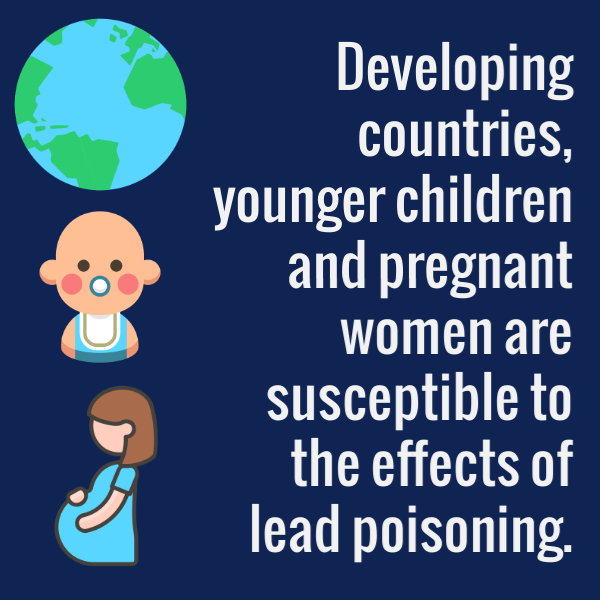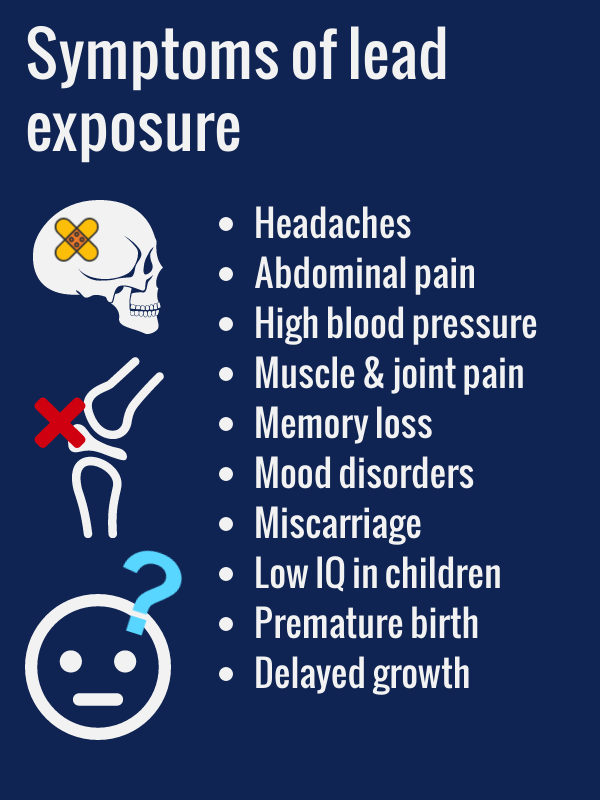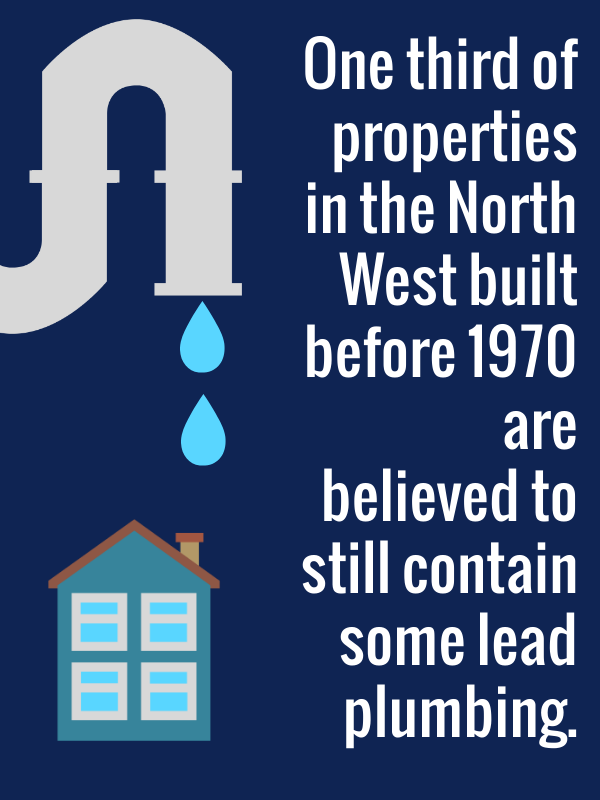
Lead is a natural metal, which is situated underground. If left there untouched, the chances of poisoning are minimal. However, due to construction and utilising lead in many products, lead exposure is a real risk, the degree of which can depend on anything from age to occupation.
Many countries have banned the production of certain lead products and limited contact with lead. Many of us, however, are still exposed to lead daily, whether it’s through paint, soil, or even our water supply. Many homes in the UK and other countries still contain lead piping.
Allow North Staffs Utility Services Ltd to run you through everything you should know about lead poisoning, including symptoms, causes and methods of prevention.
Causes of lead poisoning
There are many ways we can be exposed to lead, usually through breathing, drinking and even eating in some cases.
Extracted
One of the main sources of lead exposure is through extracting it from the earth’s crust. Whether this is from mining, construction or burning fossil fuels, once the lead is extracted from the ground, particles spread around the environment and remain for years.
Lead paint
Lead paint is another common form of lead exposure. Lead paint was previously a popular choice is households for painting walls and woodwork in homes, as well as children’s toys. Lead paint has been banned from the UK since 1992 and the US since 1978. It can, however, still be found at many older properties.
When lead paint begins to chip flake, lead particles spread and can be inhaled. Younger children may even chew the flakes.
It is possible to check whether your property has lead paint. Lead testing kits can be purchased from DIY stores. If the paint is found to contain lead, then you should refrain from trying to remove it yourself. This will only cause more lead dust to enter the atmosphere to be inhaled. It is recommended to hire a professional to do so. Alternatively, you can cover the paint with a sealant and paint over it, however, this isn’t a long-term solution.

Lead piping
There are thought to be numerous properties in the UK which still contain lead pipes, even more so in the North West.
Modern properties should be lead-free, however, houses built before 1970 may still have lead piping.
Lead particles can be picked up in the running water and then drank.
There are ways to test whether your properties pipes are lead. If the pipe is dark and uncovers a light metal undercoat when scratched, this is a clear sign the pipe is lead. If this is the case, it is recommended getting your lead pipes replaced for plastic. In the meantime, when drinking water you should run the tap for a minute beforehand.
Occupations
A leading cause of lead exposure is due to some peoples jobs. Some careers have a high exposure to lead, such as:
- Auto repair – through car batteries which contain lead
- Pipe fitting
- Painting
- Construction
- Mining
Other possible sources of lead include:
- Pottery
- Soil
- Bullets

Who is most susceptible to lead poisoning?
As well as occupation, there are other factors which make certain people more susceptible than others to lead toxicity.
Developing countries
The UK has taken steps towards reducing lead exposure to the public. Other countries, however, are more lenient when it comes to lead used in production and construction.
Younger children
Children are more susceptible to lead poisoning as they are more likely to chew on chips and remnants of lead paint. Also when playing outside they are exposed to soil which could be contaminated with lead. If they then eat without washing their hands or touch their hand to their mouth, they are then consuming particles of lead, which can stay in their body.
Pregnant women
Pregnant women aren’t more vulnerable than women who aren’t pregnant, however, they should take greater care not to be exposed to lead. This is because lead can actually harm an unborn child, having physical and mental defects. If exposed to extremely high volumes of lead, this can even result in stillbirth.

Symptoms & dangers of lead poisoning
Lead poisoning is usually gradual and takes years to develop and show any symptoms. This makes it hard to detect. Lead poisoning affects us mentally and physically and these symptoms can vary in adults, children and newborns:
Adults
- Headaches
- Abdominal pain
- High blood pressure
- Muscle and joint pain
- Loss of memory and concentration
- Mood disorders
- Reduced libido
- Miscarriage, stillbirth or premature birth
Children
- Behavioral problems
- Low IQ
- Hearing problems
- Learning difficulties
- Delayed growth
Newborn
- Premature birth
- Low birth weight
- Delayed growth

symptoms of a High dose of lead exposure
It is also possible to suffer from a high dose of lead poisoning rather than small doses which developed over time. Symptoms of this include:
- Vomiting
- Encephalopathy (coma, seizure and confusion)
- Stumbling when trying to walk
- Severe abdominal pain and cramping
- Weakness in the muscles
If these signs are apparent and remain untreated, they can lead to serious, irreversible risks, especially with children and brain development. Severe damage can be done to the kidneys and nervous system. High lead levels can cause seizures, unconsciousness and death.
Prevention
There are many simple measures you can take to limit exposure to lead. Some of these include:
Tap water
If you’re suspicious your property may contain lead piping, then you can test your water for lead. If this is found to be high, you can use a filtering device for drinking water, or replace your lead pipes with plastic.
In the meantime, running your water for a minute before drinking it will limit the amount of lead in it. Also refrain from using hot water for consumption, as lead levels tend to be higher in hot water.
Avoid lead-based products
Common products which may contain levels of lead or lead paint include old children’s toys and canned goods from abroad. It is best to avoid these or throw them away if you’re suspicious.
If your property contains lead paint, hiring a professional to remove this is recommended. The same is recommended for any tradesmen working on your home. Hiring somebody certified in lead control will limit exposure of lead to you and your property.
Wash your hands
This is more relevant for young children, as they are more likely to come into contact with lead. If they have been playing outside and their hands have dirt on, there is a chance there are lead particles in that dirt. The same goes for children’s toys which may contain lead paint. We can’t stop children playing and exploring, however getting them into the habit of washing their hands after playing and especially before they eat will limit their exposure to lead.
The same can be said for adults with a profession which means they are exposed to lead, such as mechanics. If they wear all protective equipment and wash their hands, this will go a long way in making sure high amounts of lead aren’t consumed.

As lead is prevalent in our environment, it isn’t unlikely we come into contact with it now and again. It is important to remember that small levels of lead aren’t deadly, however over time lead can have serious health risks if we’re constantly exposed to it. This is why checking our property for lead and limiting exposure at the source is the most effective means of preventing overexposure, including lead paint and water pipes.
